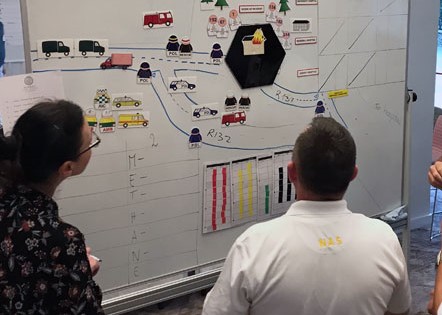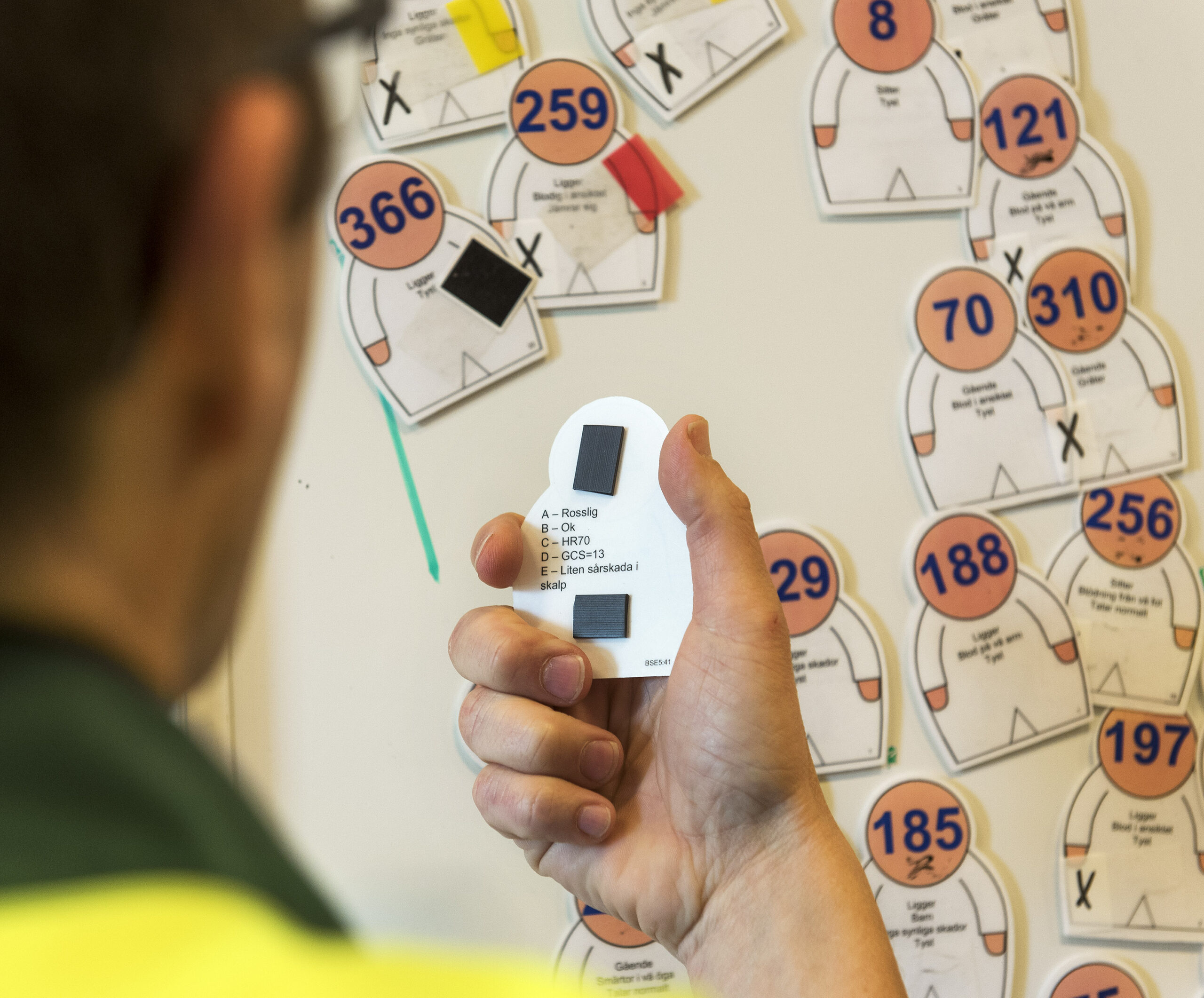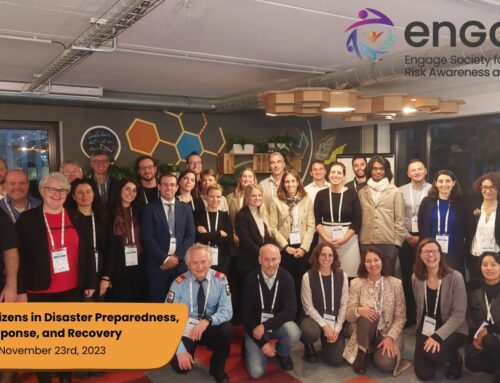Picture credits: Emergo Train System™
Different types of simulation systems are frequently used for training medical and rescue personnel, especially in regard to handling rare events or mass casualty incidents and disasters. Engage-partner and end-user The Center for Disaster Medicine and Traumatology (KMC) is home to the Emergo Train System competence center. The Emergo Train System is a simulation system for education and training in emergency and disaster management.
The Emergo Train System is used worldwide for testing and evaluation of incident command systems, disaster preparedness, the effect on the medical management systems and resilience within organizations. The system itself is analogue and based on magnetic figures and symbols that can be placed on whiteboards to illustrate an incident or surge capacity throughout the hospital. Supplementary materials, such as maps and images, are provided. The core of the system is the validated, categorized victim bank; the instructor that sets up the exercise can select patients from the bank of injured patients which suits the planned scenario for constructing the simulation. The training material is available in pre-hospital and in-hospital sets, and the large number of included patient parameters enables patient design to fit different types of triage systems.
 An Emergo Train System exercise can involve different actors, for example police, rescue services, ambulance services, but also psychosocial support teams and other stakeholders involved in an incident. Even non-professional actors, such as the public, can be involved to increase the realism of an exercise. The system has, as an example, been used to train personnel in evacuating nursing homes, as these types of evacuations could come in effect when a larger crisis such as a landslide or earthquake has taken place. Crises affecting larger areas and mass casualty incidents often demand volunteer help. Volunteer organizations or local volunteer groups taking part in simulation exercises could be beneficial for all parties involved to improve societal resilience as a whole: the trained professionals can practice involving and organizing volunteer participation, and laypersons can gain insight in regard to accident site management, methodologies, and preparedness involved in the profession. Incorporating volunteer groups or members of public in simple set up simulation exercises could empower the lay participants to act when an incident does occur. Finally, layperson participation in exercises enables research efforts on teaching and training of laypersons, an area of research imperative for improving societal resilience and preparedness for larger incidents.
An Emergo Train System exercise can involve different actors, for example police, rescue services, ambulance services, but also psychosocial support teams and other stakeholders involved in an incident. Even non-professional actors, such as the public, can be involved to increase the realism of an exercise. The system has, as an example, been used to train personnel in evacuating nursing homes, as these types of evacuations could come in effect when a larger crisis such as a landslide or earthquake has taken place. Crises affecting larger areas and mass casualty incidents often demand volunteer help. Volunteer organizations or local volunteer groups taking part in simulation exercises could be beneficial for all parties involved to improve societal resilience as a whole: the trained professionals can practice involving and organizing volunteer participation, and laypersons can gain insight in regard to accident site management, methodologies, and preparedness involved in the profession. Incorporating volunteer groups or members of public in simple set up simulation exercises could empower the lay participants to act when an incident does occur. Finally, layperson participation in exercises enables research efforts on teaching and training of laypersons, an area of research imperative for improving societal resilience and preparedness for larger incidents.
If you are interested in learning more about the work of KMC within ENGAGE, you can follow the link to this blog post.
Authors:
Peter Berggren (KMC), Susanna Lönnqvist (KMC)





